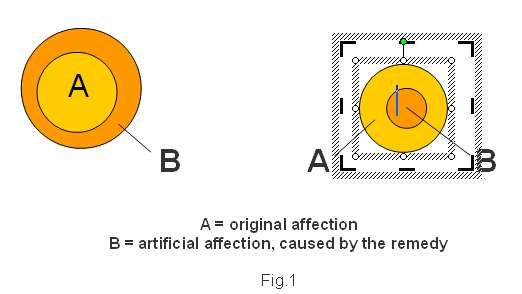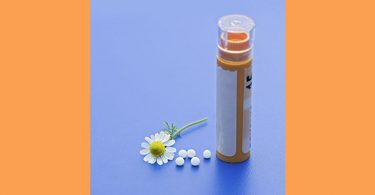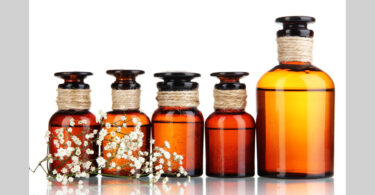In our quest for the cure of the patient, we always have to overcome three major problems:
– finding the right remedy;
– choosing the right potency;
– determining the right dose.
The right combination of these three factors creates ‘the similimum’. Indeed, it is not enough to discover the correct remedy!
As Hahnemann stated in aphorism 275:
The suitableness of a medicine for any given case of disease does not depend on its accurate homeopathic selection alone, but likewise on the proper size, or rather smallness, of the dose…
Still many homeopaths say that potency doesn’t matter, that, whatever potency you choose, if the remedy is correct, it will cure the patient. This is not correct!
In aphorism 27, Hahnemann says:
The curative power of medicines, therefore, depends on their symptoms, similar to the disease but superior to it in strength, so that each individual case of disease is most surely, radically, rapidly and permanently annihilated and removed only by a medicine capable of producing (in the human system) in the most similar and complete manner the totality of its symptoms, which at the same time are stronger than the disease. (emphasis added)
In aphorism 26 he also says:
This depends on the following homeopathic law of nature which was sometimes, indeed, vaguely surmised but not hitherto fully recognized, and to which is due every real cure that has ever taken place:
A weaker dynamic affection is permanently extinguished in the living organism by a stronger one, if the latter (whilst differing in kind) is very similar to the former in its manifestations. (emphasis added)
So, it may be clear that a well chosen remedy, given in a potency that is less powerful then the original affection, will be extinguished (and for that will not work) by the latter. (Fig.1)
Possibly, this wrong interpretation, has its origin in aphorism 279 in which Hahnemann tells us:
This pure experience shows UNIVERSALLY, that if the disease do not manifestly depend on a considerable deterioration of an important viscus (even though it belong to the chronic and complicated diseases), and if during the treatment all other alien medicinal influences are kept away from the patients, the dose of the homeopathically selected and highly potentized remedy for the beginning of treatment of an important, especially chronic disease can never be prepared so small that it shall not be stronger than the natural disease and shall not be able to overpower it, at least in part and extinguish it from the sensation of the principle of life and thus make a beginning of a cure. (emphasis added)
First of all, there has to be made an important difference between potency and dose. The potency determines the power of our remedy; the dose is the quantity the patient will take of it. This brings us back to the beginning of this article: the similimum is:
– Right remedy
– Right potency
– Right dose
Now, how can we determine which potency and which dose we will use, once we have found the right remedy? There’s no mathematical formula to figure this out (which is one of the reasons that some scientists call homeopathy ‘quackery’).
Hahnemann himself told us in aphorism 278:
Here the question arises, what is this most suitable degree of minuteness for sure and gentle remedial effect; how small, in other words, must be the dose of each individual medicine, homeopathically selected for a case of disease, to effect the best cure? To solve this problem, and to determine for every particular medicine, what dose of it will suffice for homeopathic therapeutic purposes and yet be so minute that the gentlest and most rapid cure may be thereby obtained – to solve this problem is, as may easily be conceived, not the work off theoretical speculation; not by fine-spun reasoning, not by specious sophistry can we expect to obtain the solution of this problem. It is just as impossible as to tabulate in advance all imaginable cases. Pure experiment, careful observation of the sensitiveness of each patient, and accurate experience can alone determine this in each individual case; and it were absurd to adduce the large doses of unsuitable (allopathic) medicines of the old system, which do not touch the diseased side of the organism homeopathically, but only attack the parts unaffected by the disease, in opposition to what pure experience pronounces respecting the smallness of the doses required for homeopathic cures. (emphasis added)
In other words, the choice of the potency and the dose of the remedy have to be determined, based on experience, keen observation and prudence! However, there are some guidelines that can help us. Do we have a chronic or an acute case; are there only physical symptoms (or couldn’t we discover the mental ones…); is there severe pathology; do we have to deal with a hyper- or hyposensitive patient…?
After we decided which potency we’re going to use, we must see how we will administer it and what will be the dose. As with many homeopaths, I used to work with dry doses; 3 pellets under the tongue, then wait or repeat after a certain time… However, the ‘waiting time’ often turned out to be ‘wasted time’. Due to wrong potency/dose choice, there were times the remedy showed either no action at all or too much action which resulted in aggravations.
As it is most of the time, Hahnemann tells us what to do. First of all, we should use water potencies of the remedy (aphorism 272):
Such a globule, placed dry upon the tongue, is one of the smallest doses for a moderate recent case of illness. Here but few nerves are touched by the medicine. A similar globule, crushed with some sugar of milk and dissolved in a good deal of water and stirred well before every administration will produce a far more powerful medicine for the use of several days. Every dose, no matter how minute, touches, on the contrary, many nerves. (emphasis added)
On the one hand, the medicine will be more powerful since it touches more nerves but on the other hand, we have lots more flexibility to adapt the dose to the patient’s needs/sensitivity. You can make the remedy bottles yourself and give them to your patients or the patients themselves can easily make these. I usually advise to take a bottle of spring water, empty it for about 1/4th (to get space to give succussions), put 2 pellets of the remedy in it and eventually, add a little bit of alcohol as a preservative.
Again, as with the potency choice, we have to determine which dose we will advise. So again, we must consider the case (acute/chronic) and the sensitivity of the patient.
Knowing this, I always start with a ‘test dose’ (one teaspoon of the remedy bottle in a glass of water, stirring, take one teaspoon of the glass).
The result of this test dose provides you with information:
– Best case (not very often…): striking amelioration; remedy-potency-dose were perfect; no repetition as long as amelioration holds.
– Slight improvement of the symptoms. Now, the remedy can be repeated at certain intervals, as long as each new dose brings on a little bit more improvement. How frequently the doses should be taken is, again, not mathematically determined; in acute cases, you can take more frequently than in chronic cases. At least, you should allow time for the vital force to react and to show you the results of the remedy. Most of the time, I start repeating every other day.
Very IMPORTANT! You have to tell (teach) the patient to succuss the bottle every time before taking a new dose. As Hahnemann told us in aphorism 246:
…firstly, if the medicine selected with the utmost care was perfectly homeopathic; secondly, if it is highly potentized, dissolved in water and given in proper small dose that experience has taught as the most suitable in definite intervals for the quickest accomplishment of the cure but with the precaution, that the degree of every dose deviate somewhat from the preceding and following…
And in aphorism 247:
…But if the succeeding dose is changed slightly every time, namely potentized somewhat higher (§§ 269-270) then the vital principle may be altered without difficulty by the same medicine (the sensation of natural disease diminishing) and thus the cure brought nearer.
Usually, I start with 6 succussions. Since the succussions change the degree of dynamization, you reinforce the power of the remedy. If necessary, due to poor reaction or due to aggravation, you can easily increase or decrease the amount of succussions.
– No reaction. Supposing that we made a good anamnesis and we’re quite sure of the remedy, this means that either potency or dose is insufficient.
Before increasing the potency, I try to give more successions for a couple of days, especially when I know or suspect that the patient is very sensitive.
The biggest difference when using watery solutions is that you can almost perfectly adjust the dose to the sensitivity/need of your patient.
Adjustments can be made on different planes:
– You can increase the power of the remedy by increasing the potency or by increasing the number of successions.
– You can adjust the dose by increasing or decreasing the number of teaspoons. If a teaspoon is even too much, you can advise one or a few drops.
– For sensitive patients, you can dilute further to second, third, etc. glass.
Indeed, this system gives you all the tools to fine-tune your homeopathic remedy in such a way that you will really find the similimum – right remedy, right potency, right dose.
There’s one important note: The use of this system demands a more frequent contact between homeopath and patient. It may be clear that you need a regular feedback from your patient in order to follow up the case more closely, adjust potency-dose right on time etc. About 200 years ago, Hahnemann could do it so why shouldn’t we be able to, having (cell) phone or e-mail at our disposal.
We also have to educate our patients. They have to be made clear about the ‘how and why’s’ of the system, so that they get motivated to give you their feedback. It’s important that they know when they should contact you, when they should stop taking the remedy etc…
Case 1
A young man, 21 years old, suffers from severe sleepiness. As soon as he stops working, he falls into a deep sleep. These problems began after he was beaten up by some guys, without any reason. He was severely injured on the head, needed a few operations etc…
Remedy: Opium 200 (one teaspoon from remedy bottle in glass of water, one teaspoon of that taken)
Test dose: No reaction
Follow up: Opium 200 – 6 succussions – once a day for 5 days
No reaction
Follow up: Opium M – 6 succussions – once a day for 5 days
Great improvement – sleepiness is completely gone.
Follow up: Stop the medicine – No return of the symptoms
Remark: The remedy was not changed since there was no change of symptoms. It was still an Opium picture so the only thing that had to be changed was the power of the remedy (potency) or the dose.
Case 2
Woman, 40 years old, chronic fatigue syndrome. Many problems of joint and muscle pains, exhausted, depressed. History of unhappiness, parental domination, etc…
She seems to be very sensitive to medication, certain food, alcohol etc…
Remedy: Nat mur 6C (one teaspoon from remedy bottle in glass of water, one teaspoon of that taken
Test dose: Aggravation on all planes.
Follow up: Nat mur 6C – 2 succussions – diluted to 2nd glass – one teaspoon
Follow up: Another aggravation
Follow up: Nat mur 6C – 2 succussions – diluted to 4th glass – one teaspoon
Follow up: Slight improvement on all planes – improvement lasts for about 3 days
Follow up: Nat mur 6C – 2 succussions – diluted to 4th glass – one teaspoon – every 3 days
Follow up: More improvement after each dose. She’s still on medication today.
Remark: Instead of diluting to 4th glass, I could also try to give drop doses instead of teaspoons
Case 3
Woman, 48 years old, menopausal complaints accompanied with joint problems, emotional disturbances, painful menses, etc. Her history shows she’s a sensitive person.
Remedy: Sepia 30
Test dose: No reaction
Follow up: Sepia 30 – 6 succussions – every other day for 6 days
Follow up: No reaction
Sepia 200 – 6 succussions – every other day for 6 days
Follow up: No reaction
Sepia M – 6 succussions – every other day for 6 days
Follow up: After 3 days she contacts me to announce a great improvement (joints – emotionally – energy)
Follow up: Since the improvement lasts for about 5 days, I tell her to take the remedy every 5 days.
Follow up: After about 2 months, the remedy was no longer needed.
Remark: In this case, I was convinced that Sepia had to be the right remedy so if improvement failed to occur, it had to be due to wrong potency/dose choice.
Acknowledgment:
Although Hahnemann has told us how to use this system in his 6th edition of the Organon, I only ‘discovered’ it after reading ‘Hahnemann revisited’ and ‘Achieving and Maintaining the Similimum’, both by the hand of Luc De Schepper.
Every homeopath who is determined to practice homeopathy in the way Hahnemann did, should study those books. They’re written in such a clear way that every tip is ready-to-use. Every chapter of the book improves your practice. The advice Luc De Schepper gives concerning case management (Achieving and Maintaining the Similimum) is so useful that I decided to make an interactive PowerPoint presentation of it. It’s free to use and it can be downloaded at: https://hpathy.com/ppt/wijk-potency.ppt
References:
– Organon 6th edition – S. Hahnemann
– Hahnemann revisited – Luc De Schepper
– Achieving and maintaining the similimum – Luc De Schepper
©Marc Van Wijk






I loved your article….it is precise and clear…the cases are icing on the cake…just one doubt..for e.g. you say-Opium 200-6 succussions-once a day for 5 days-so, do you succuss every time you give a dose?
Yes indeed! As Hahnemann told us, you should succus every time when you take another dose. Doing so, every following dose is a little bit stronger, more potentised, as the previous!
If it is a chronic case, can natrum mur 12 succussed be given for 3 months?
Remember what he said in his article? There are no guidelines except for the feedback you receive from your patient. So if the feedback is, “12C is still doing great!” then you continue with the 12C. If the patient says, “12C stopped working two weeks ago!” then you know you gave to go up to the 15C, more than likely. Other option, raising the succussions to 10, or taking more often–twice a day, for example.
Hahnemann …1800’s
Asprin….1800’s (origin)
Which has had more effect ?
“The popularity of aspirin declined after the market releases of paracetamol (acetaminophen) in 1956 and ibuprofen in 1969. In the 1960s and 1970s, John Vane and others discovered the basic mechanism of aspirin’s effects, while clinical trials and other studies from the 1960s to the 1980s established aspirin’s efficacy as an anticlotting agent that reduces the risk of clotting diseases. Aspirin sales revived considerably in the last decades of the 20th century, and remain strong in the 21st century, because of its widespread use as a preventive treatment for heart attacks and strokes.”
http://en.wikipedia.org/wiki/Asprin#History
So?
My first reaction is same, SO ?
In the United States and the United Kingdom paracetamol is the most common cause of acute liver failure.
http://en.wikipedia.org/wiki/Paracetamol_toxicity
Also see
http://en.wikipedia.org/wiki/Asprin#Adverse_effects
Great article! This is just what I tell my clients! At some point in the article I said to myself, “It sounds like he’s read Dr. Luc,” and indeed, you had! Yes, you are right, HAHNEMANN REVISITED by Dr. Luc is so easy to read and explains everything so well.
yes, a deep study about the organon will help any body to get the cure in homeopathy treatment. But it is difficult to understand the basic theory.
today, our sinfulness had gone to maximum-point : with the help of allopathic lethal-science (=first of it, vaccinations), we were ordering
the need of
re-neo-high potenced Homoeopathic Cure.
Very useful. I am greatly benefitted and able to understand the philosophy of homeopath in a much better way. Thanks a ton